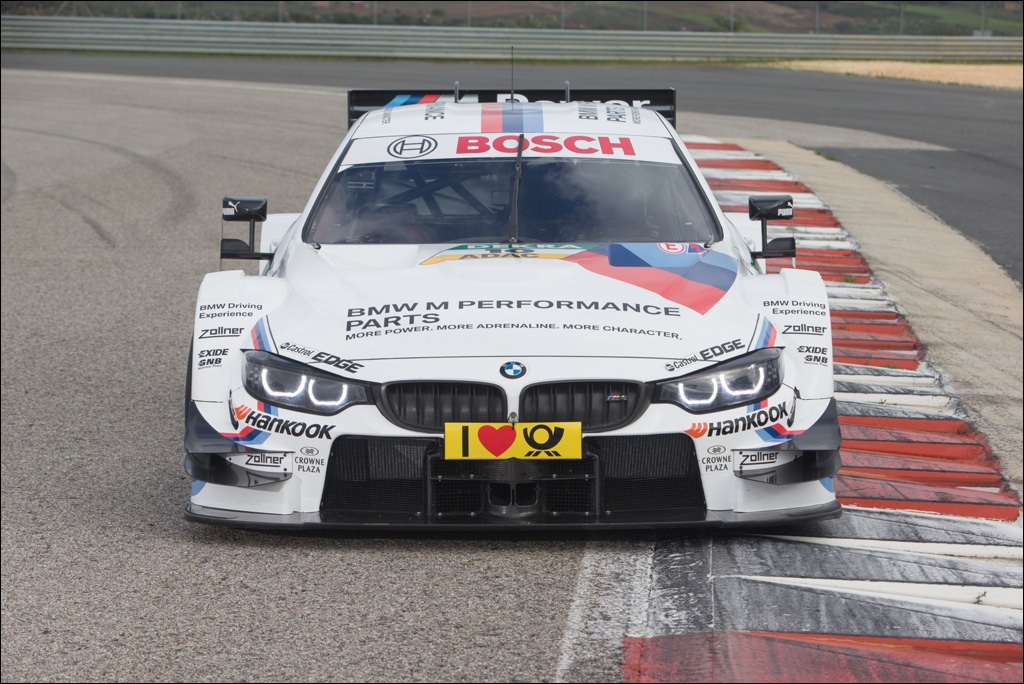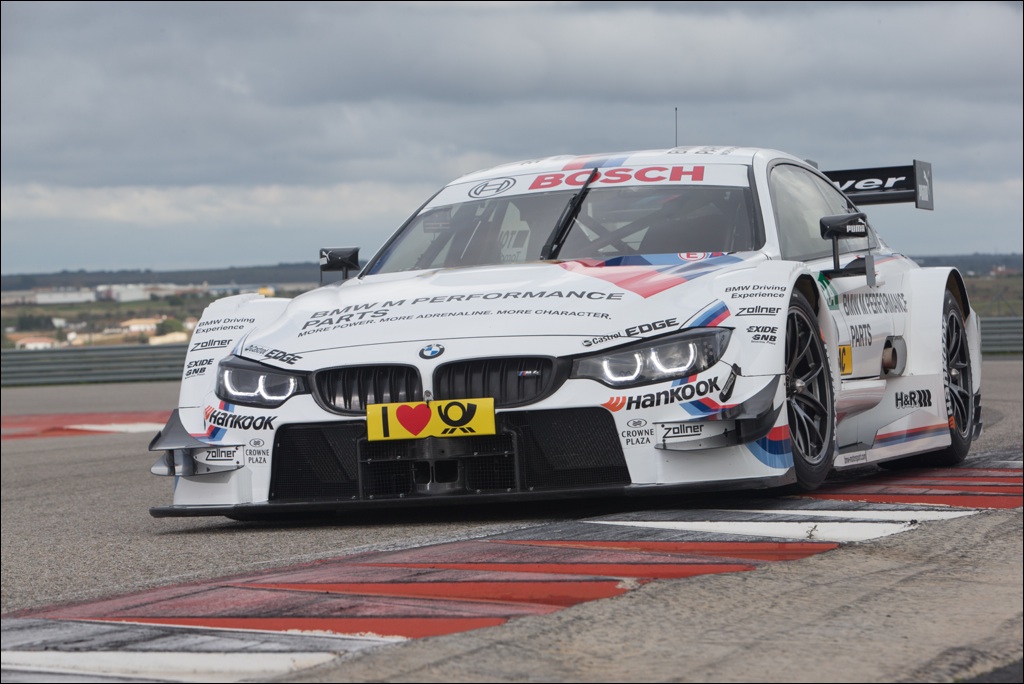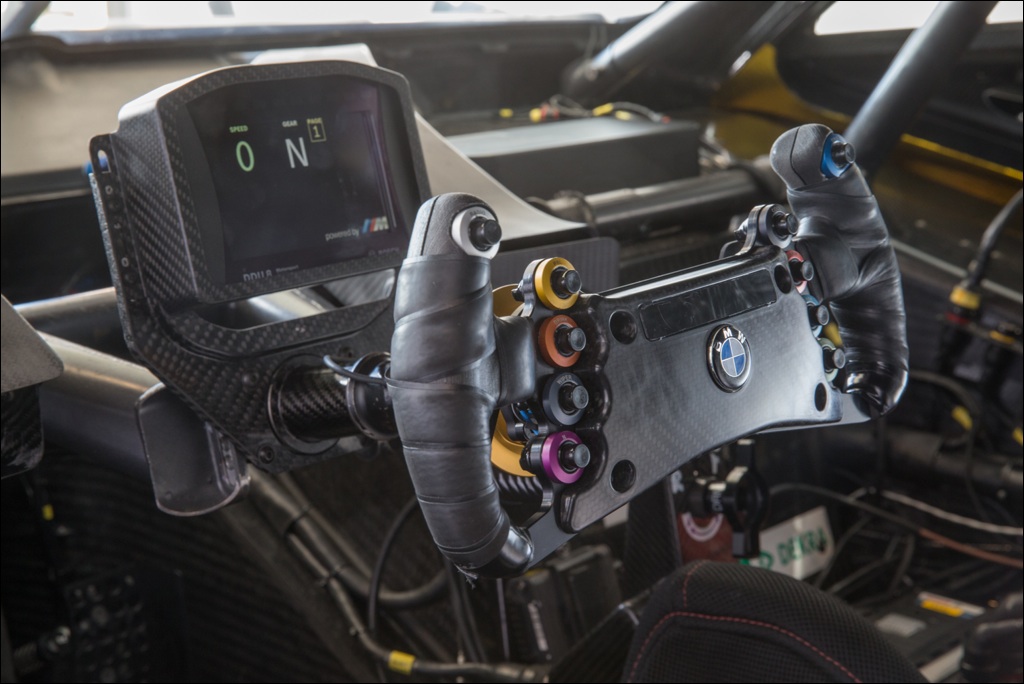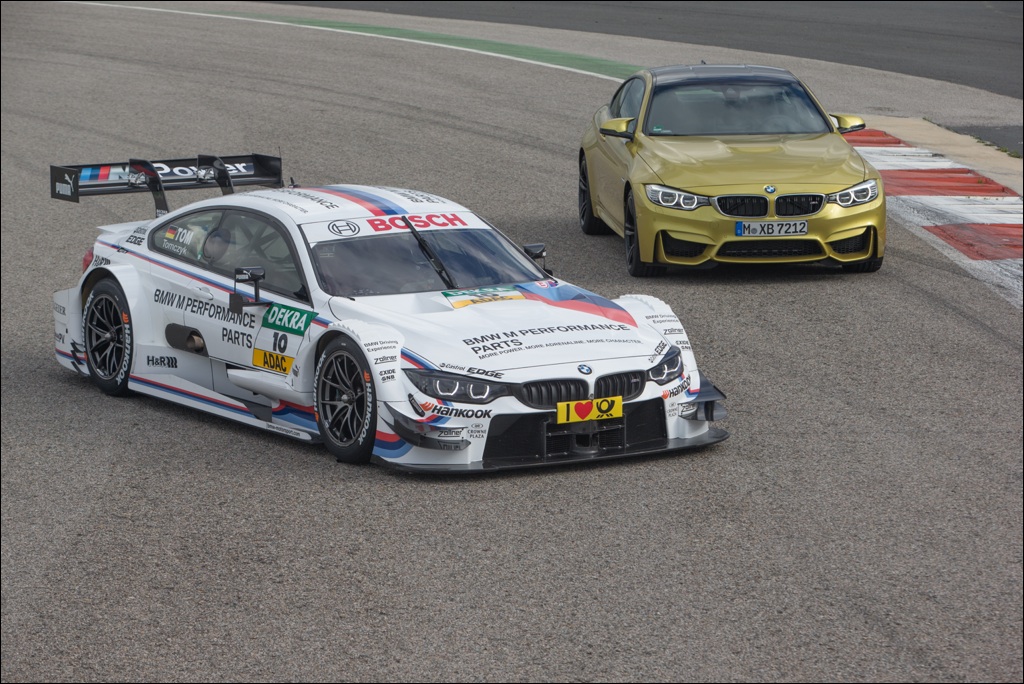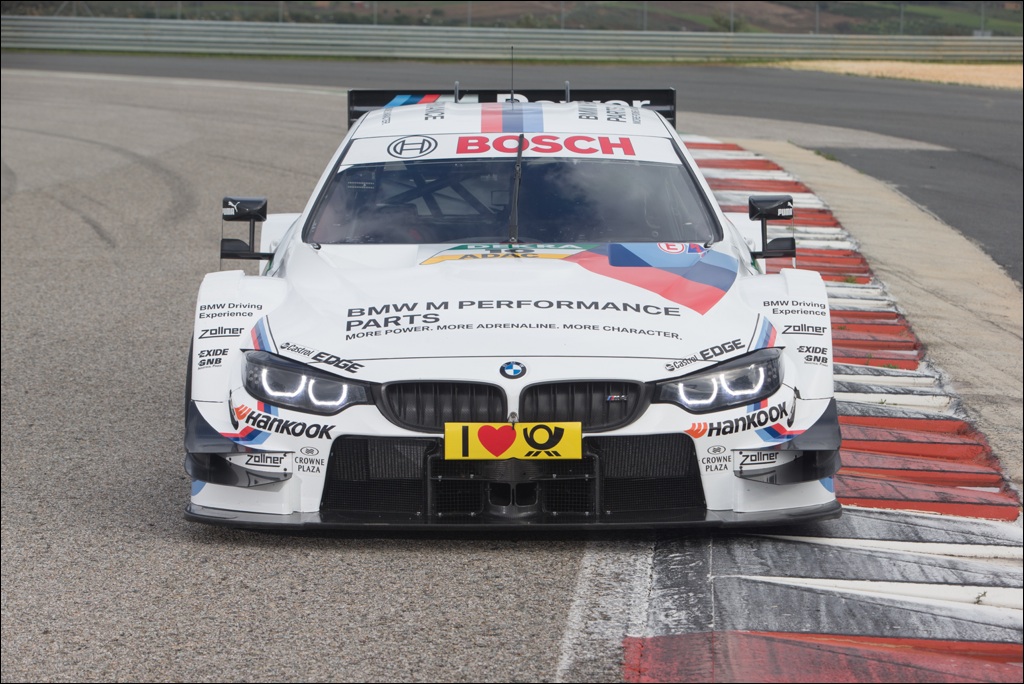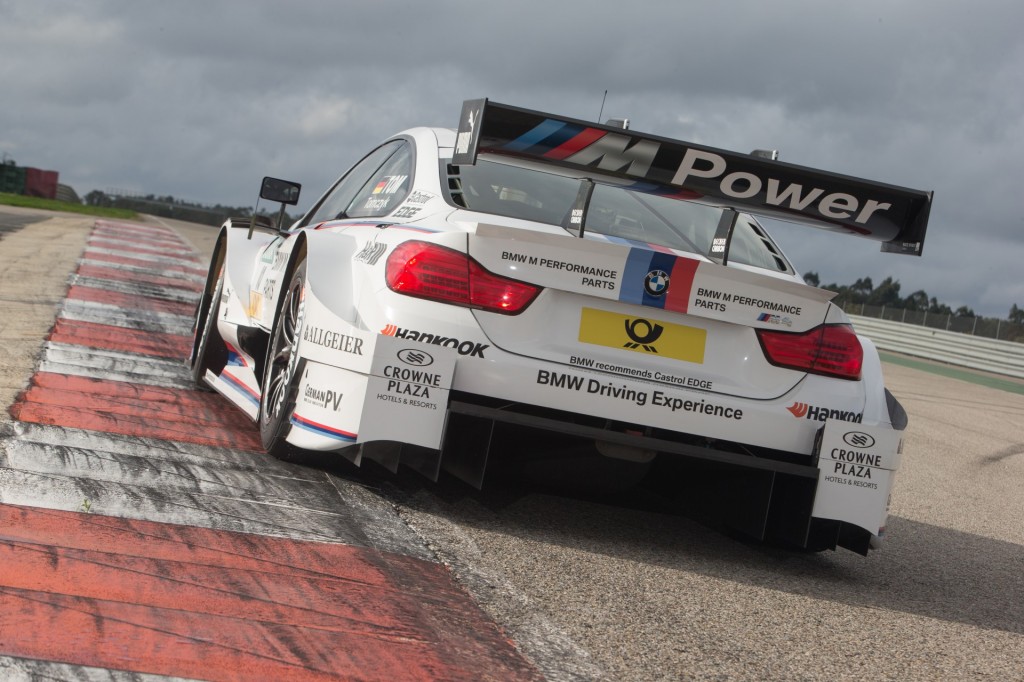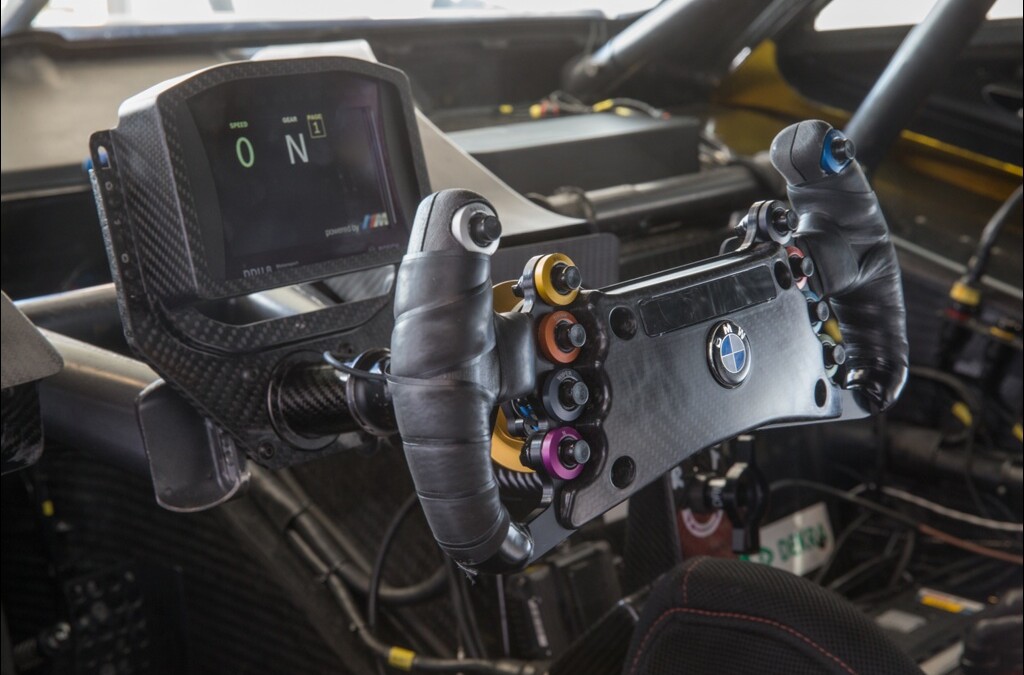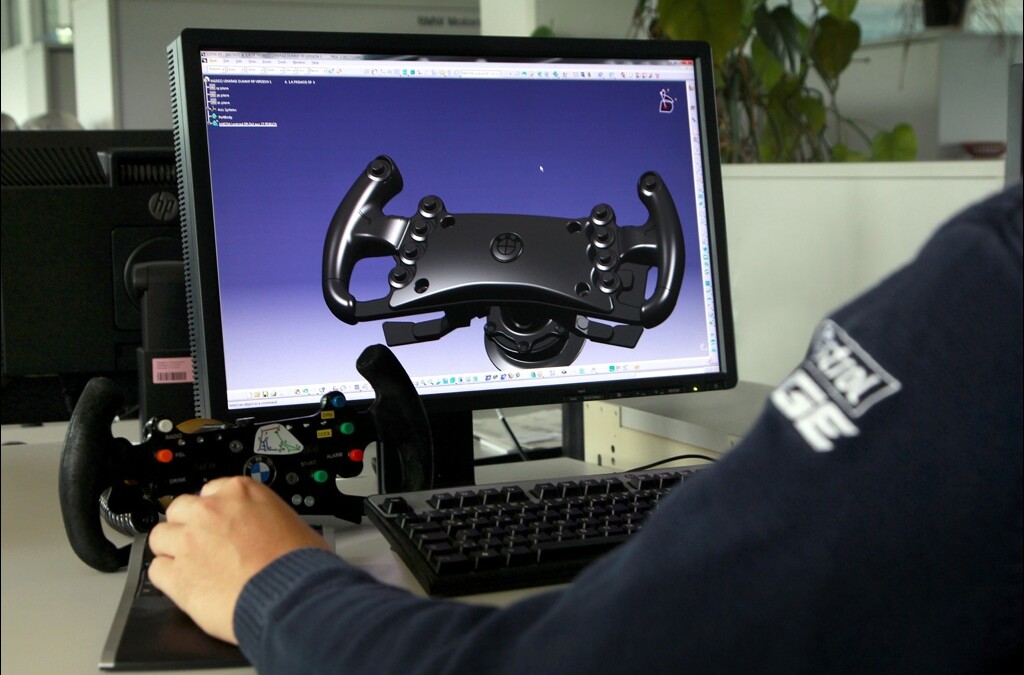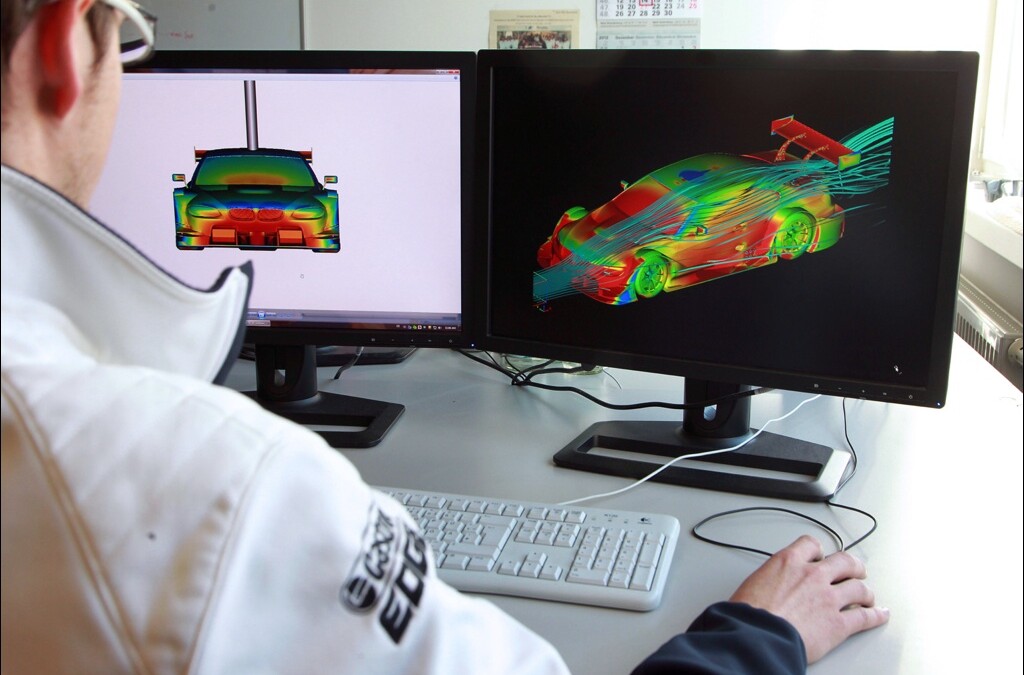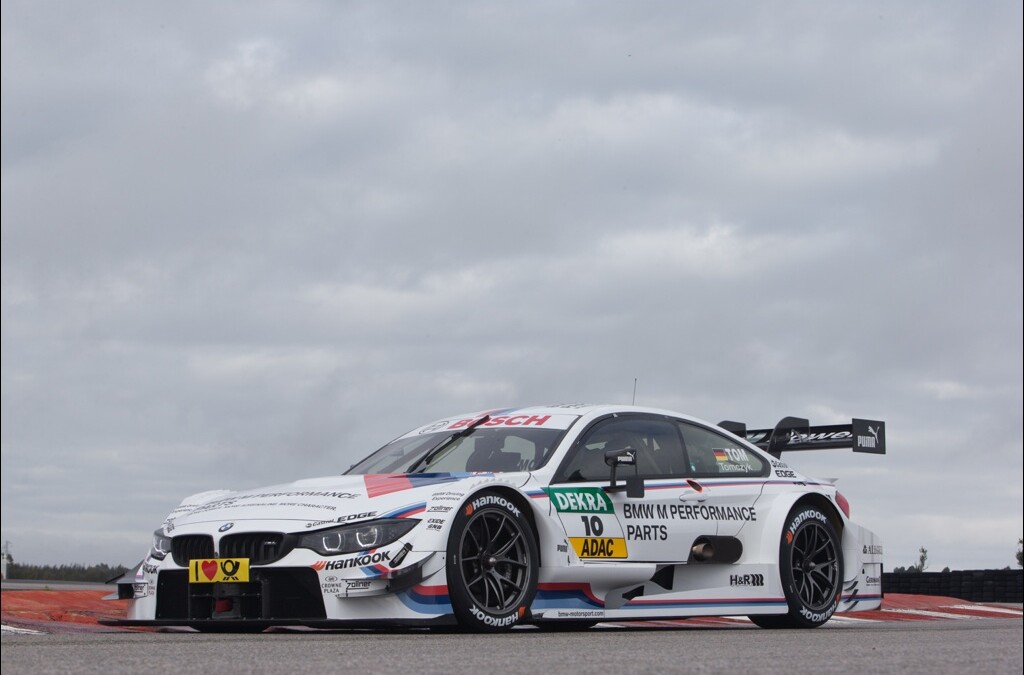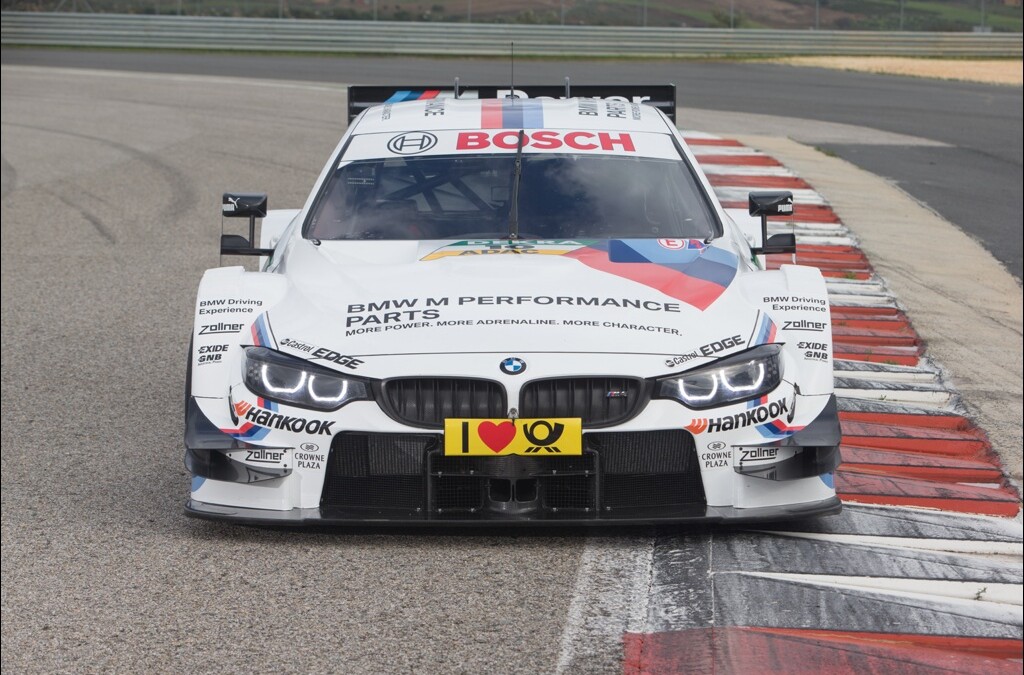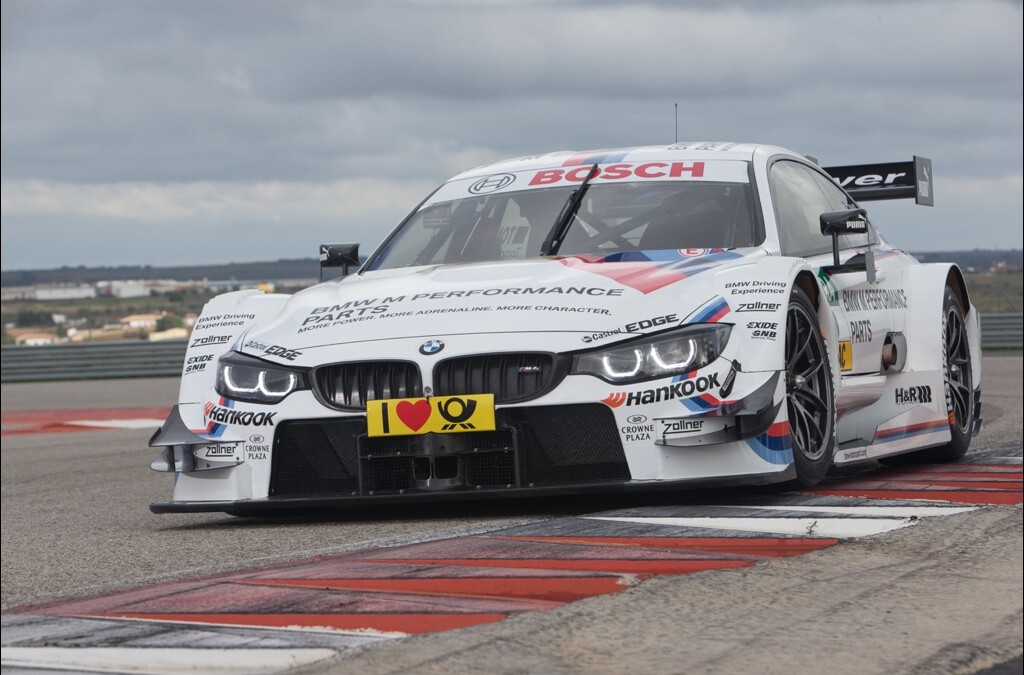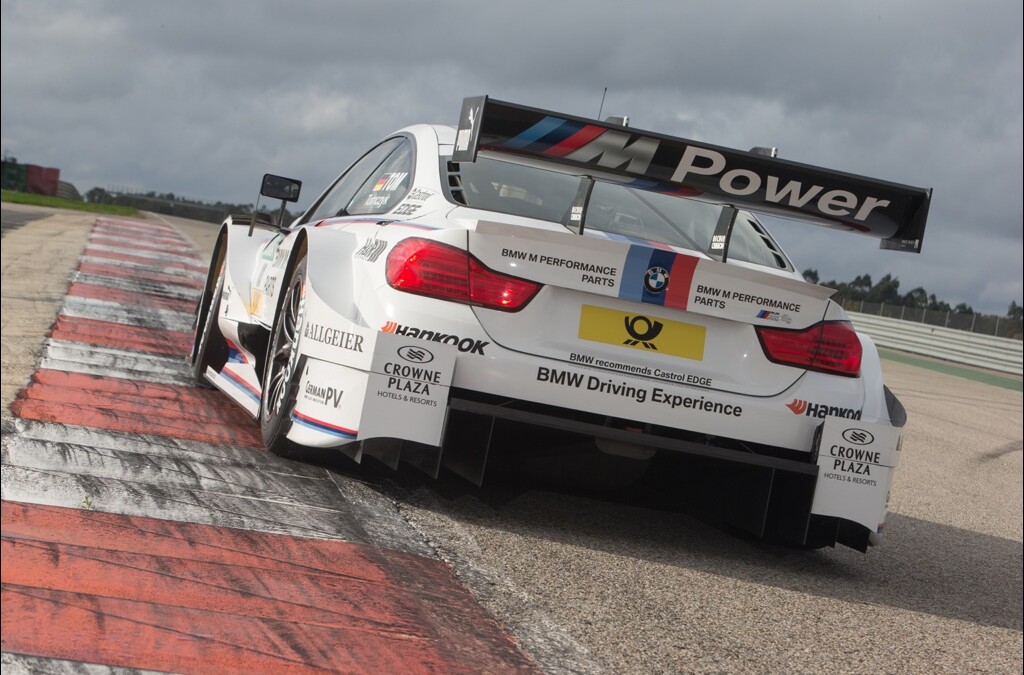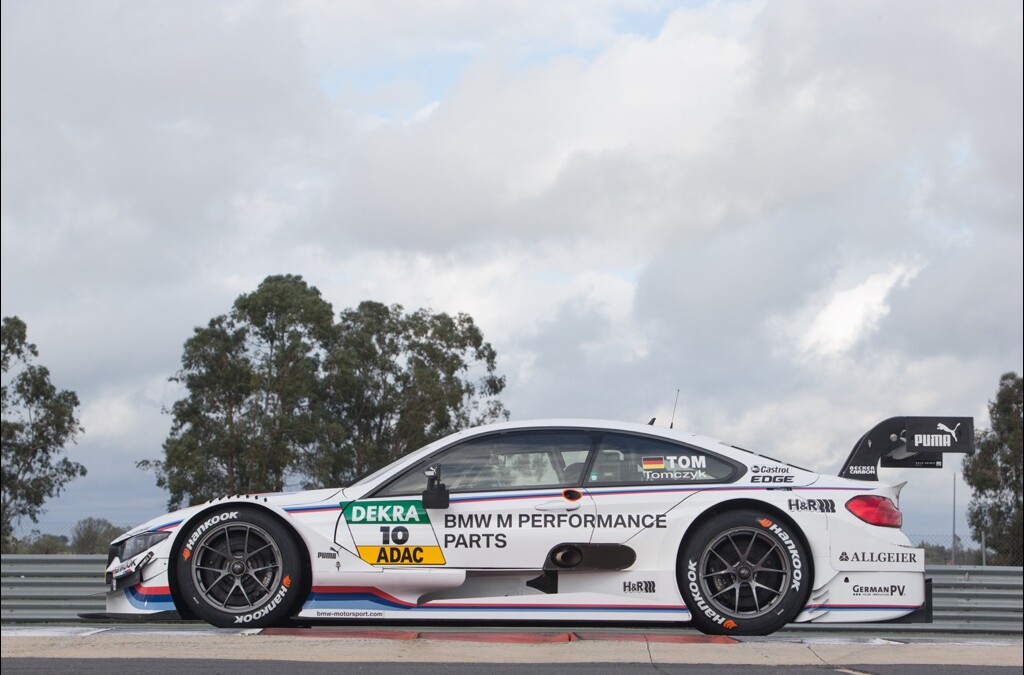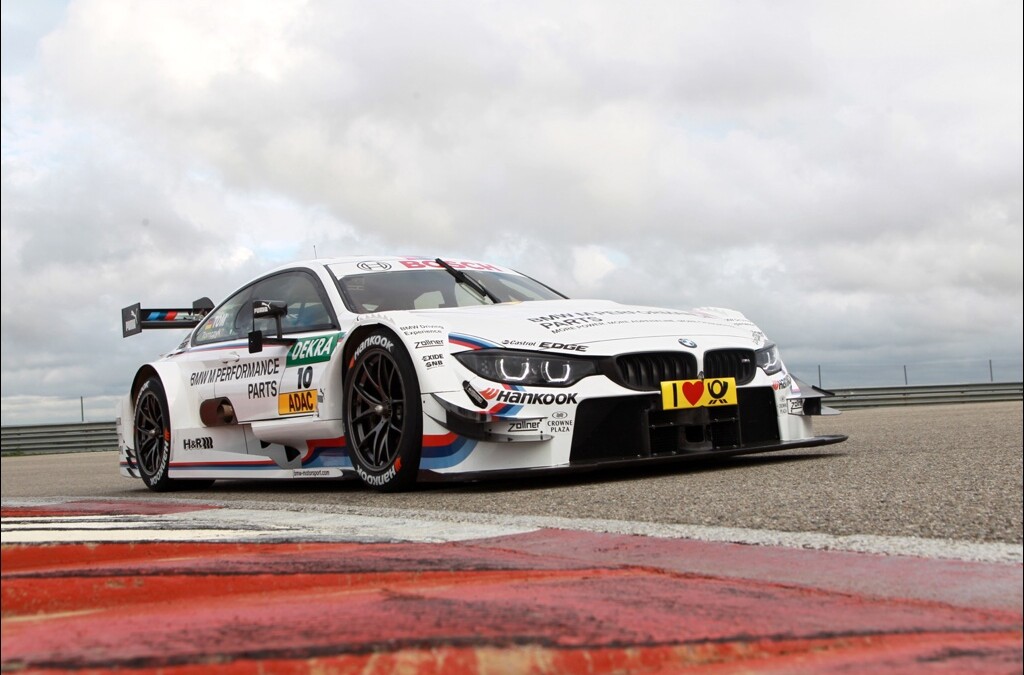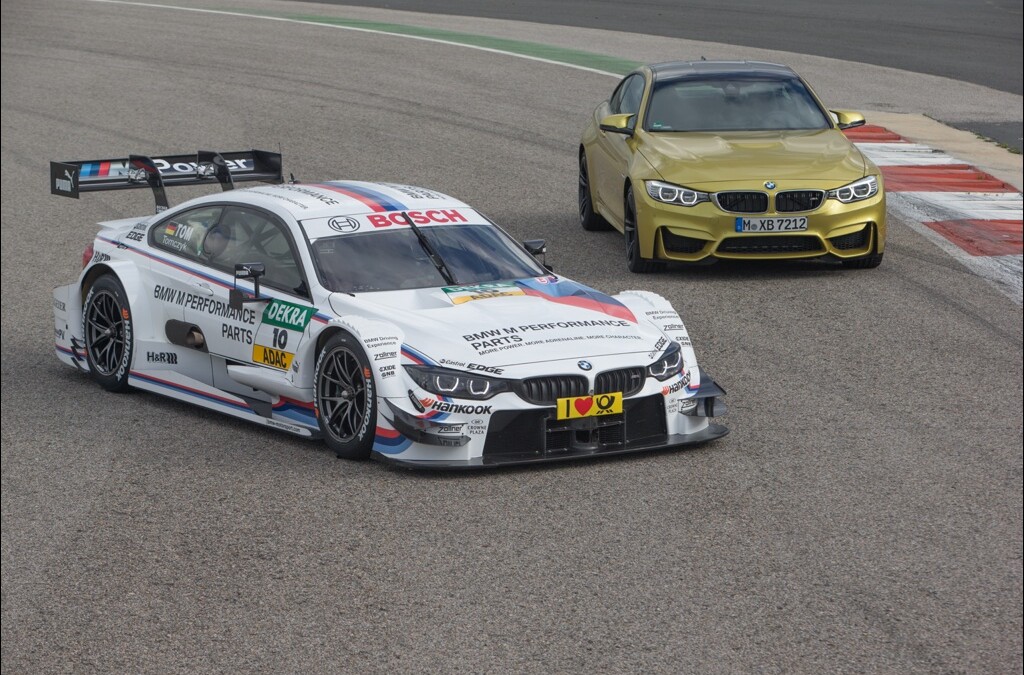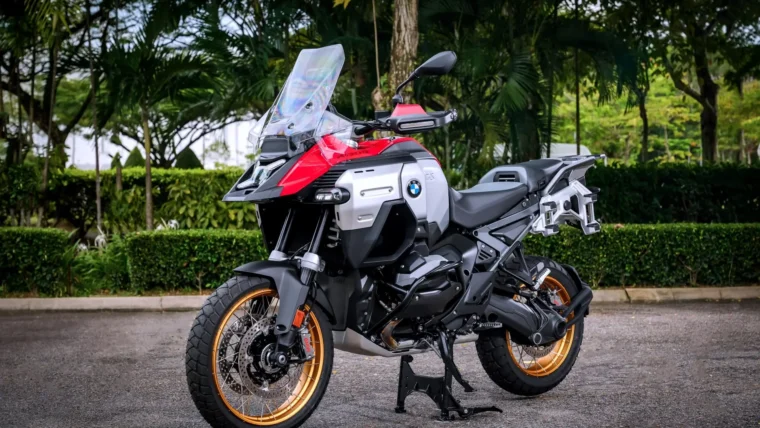The submission of the necessary papers for the aerodynamic homologation of the 2014-spec DTM cars to the Deutsche Motor Sport Bund (DMSB) also marks the end of a busy, and yet exciting, period for BMW Motorsport. Development work on the BMW M4 DTM, which will compete in the forthcoming DTM season, has been in full swing in recent weeks and months. As of today, it is no longer possible to make modifications to fundamental areas of the car, heralding a new phase of preparations for the start of the season in Hockenheim (DE) on 4th May. The forthcoming tests will primarily focus on optimising detailed aspects of the total package and understanding how to exhaust the full potential of the BMW M4 DTM.
The new car will make public appearances out on the track at the official ITR tests in Budapest (HU, 31st March – 3rd April) and then at the final test in Hockenheim (DE, 14th – 17th April). Like last year, the official presentation of all eight BMW M4 DTMs on 25th April in Munich’s BMW Welt will provide BMW Motorsport fans with a mouth-watering taste of what they can look forward to in the new season.
“Even before the BMW M3 DTM completed its final race last season, our development team was already hard at work on the 2014 car,” said BMW Motorsport Director Jens Marquardt. “Preparing a new car for the DTM is a big challenge. In few other series is aerodynamics so important. Even the slightest detail can make the difference between success and failure. And this attention to detail shown by our engineers is apparent at first glance – from the elongated bonnet with its steeply sloping front and aerodynamically optimised wing mirrors, to the contoured roofline that is a characteristic feature of the BMW M4.”
Marquardt added: “For me, the BMW M4 DTM is an absolute highlight. Like its production counterpart, it looks fantastic and it also made a positive first impression at our tests. Unlike when we were developing the BMW M3 DTM for our return to the DTM in 2012, this time around we were able to call upon the wealth of experience gained over the last two seasons. Despite this, we still have a long road ahead of us – the opposition have continued to develop their cars in the meantime. It is important to continue gradually improving the new car and ensure we can get the very best out of it, in order to be able to compete on a par with our strong and experienced rivals right from the outset with the BMW M4 DTM. I am confident we will achieve this. Every DTM fan can already look forward to the first showdown in Hockenheim on 4th May: only then will we know exactly how competitive the BMW M4 DTM really is.”
Presenting the BMW M4 DTM for the 2014 season:
Development.
BMW Motorsport engineers started to look ahead to 2014 and began working on the development of the new BMW M4 DTM well before the start of the 2013 DTM season. The first model made its first appearance in the wind tunnel at the BMW Group’s Aero Lab on 22nd April – 13 days before the opening race of the 2013 season in Hockenheim (DE). In the summer of 2013, while continuing with aerodynamic testing, the experts in Munich (DE) turned their attention to designing new suspension parts. The new components made their first on-track outing in December 2013 – but still within the BMW M3 DTM at that point. The final parts for the chassis of the BMW M4 DTM were in production by the turn of the year, allowing the BMW teams to assemble the first models of the new car in January and February. Three hundred days after the first test in the wind tunnel, the BMW M4 DTM took to the track for its track debut in Monteblanco (ES) on 11th February 2014.
The production version of the BMW M4 Coupé provided BMW Motorsport with a perfect basis for developing the DTM racing car. Hardly surprising, given the fact that the primary goal of the BMW M GmbH engineers working on the BMW M4 Coupé was to create a robust car suitable for use on the racetrack. Among those to make valuable contributions towards achieving this goal were DTM drivers Bruno Spengler (CA) and Timo Glock (DE), who took part in tuning tests at the Nürburgring-Nordschleife (DE). “I am proud to have played my part in the fine-tuning,” said Spengler. “The chassis of the BMW M4 Coupé is very sporty. The feedback from the front axle is extremely direct, and the grip on the rear axle is phenomenal. This car is the ideal basis for our car in the DTM.”
Production.
The last BMW M car to roll off the assembly line at the main BMW Plant in Munich did so back in 1991. After that, production shifted to BMW Plant Regensburg (DE). Almost 23 years later, the assembly process returned to the main factory – and just a few metres away BMW Motorsport engineers were hard at work tinkering with the racing version of the new car. However, the BMW Plants in Regensburg and Dingolfing (DE) were also involved in the development of the BMW M4 DTM. Among other things, the kilometre-long test tracks at the modern production facilities were used for aerodynamic tests. Throughout the development phase, the 2014 DTM car was to be seen at what is otherwise the venue for the exhaustive quality control checks performed on all BMW M cars.
Design.
The BMW M4 Coupé and the BMW M4 DTM lie low and flat on the tarmac. Even when stationary, the design’s powerful contours underline the performance of the two brothers. Characteristic design elements, such as the modern take on the twin headlight arrangement and distinctive twin-bar kidney grille, ensure that the car clearly stands out as a BMW M vehicle. The power dome on the bonnet is equally striking. The side of the car extends the dynamic impression created by the front end. The proportions typical of the BMW M4 Coupé, such as the long bonnet, long wheel base, set-back greenhouse and a short front overhang, formed the basis for the low and aerodynamic silhouette of the BMW M4 DTM.
Aerodynamics.
Aerodynamics plays a vital role in the DTM. For this reason, the BMW Motorsport engineers devoted a lot of time to issues such as aerodynamic drag and air flow. As on the production model, the air curtains at the front of the BMW M4 DTM are designed to reduce air drag. Narrowing air ducts accelerate the airstream flowing through the front skirt, guide it systematically past the wheels, and reduce turbulence around the wheel arches. Another new feature on the BMW M4 DTM is a plate along the side channel, which lends the racing car an even more striking outline. The eye-catching contoured roofline decreases the front surface area of the BMW M4 DTM and further reduces aerodynamic drag. The flatter rear window optimises the way the airflow approaches the rear wing. The striking wing mirrors, with their twin-stalk mounts, are already a striking feature of the production model, and the mirrors on the BMW M4 DTM have also been aerodynamically optimised for the racetrack to ensure they aid efficient airflow towards the rear of the car.
Lightweight construction.
The BMW M4 Coupé itself is a prime example of intelligent, lightweight construction. The high-performance sports car weighs just 1,497 kilograms when empty – that is a whole 80 kilograms less than its predecessor. This reduction of weight has a positive effect on the driving dynamics and consumption. This has been made possible by the extensive use of lightweight materials, such as carbon fibre reinforced plastic and aluminium. The use of carbon is also widespread in motor racing. Virtually the entire body of the BMW M4 DTM is made of this ultra-light and durable material. The weight reduction and consequent lowering of the centre of gravity are key to the car’s performance on the racetrack. The basic weight of the BMW M4 DTM, with driver, is 1,110 kilograms.
Safety.
Like the BMW M4 Coupé, the racing version also meets the highest safety standards. Over 50 of the 5,000 plus parts that make up the BMW M4 DTM are standard components, which are used in all DTM cars. One of these is the carbon fibre monocoque, which sets the benchmark in terms of safety in motorsport. With an integrated tank, steel roll cage and additional crash elements, it offers the driver effective protection in case of a crash. Parts like the gearbox, clutch, dampers and rear wing are identical in all DTM cars. This also keeps a lid on development costs.
Engine.
The BMW P66 engine in the BMW M4 DTM generates approx. 480 bhp with the air restrictor specified in the technical regulations. It is made up of 800 different components, consisting of 3,900 individual parts. When designing the DTM drivetrain, BMW Motorsport took full advantage of the technological know-how within the BMW Group. The high-tech foundry connected to BMW Plant Landshut (DE) accounts for the large cast parts, such as the cylinder head and crankcase – just as it does in the production of the six-cylinder in-line engine for the BMW M4 Coupé. The cast parts are coated and given the necessary heat treatment within the appropriate departments in Munich. The BMW V8 for the DTM is both a sprinter and a marathon runner. It allows the BMW M4 DTM to accelerate from 0 to 100 km/ in about three seconds. Only ten engines are permitted for all eight BMWs over the course of the entire season. Therefore, reliability is a prerequisite to success.
The engine’s power is transferred via a sequential six-speed sport gearbox, which is operated pneumatically using shift paddles mounted on the steering wheel. The gearbox is one of the standard components, which are used by all the DTM manufacturers. It has 11 final drive ratios, which allow the engineers and drivers to react to the respective circuit and engine characteristics when setting the car up.
Steering wheel.
Additional status displays and a customised layout of the controls make the steering wheel in the new BMW M4 DTM even more comfortable for the drivers to use. The individual buttons can be allocated as the driver desires. As with the racing car, the gears on the BMW M4 Coupé can also be changed using shift paddles on the steering wheel, depending upon the configuration.
Lights.
Drivers of both the BMW M4 DTM and the BMW M4 Coupé can rely on the performance of modern LED headlamps. Light emitting diodes do more than simply save energy. Thanks to the significantly shorter reaction time compared to conventional filament lamps, the driver behind is given more notice when a driver in front of him is braking. And every fraction of a second counts on the racetrack. The light generated by LEDs is also very similar to sunlight, making it particularly easy on the eye.
Technical data for the BMW M4 DTM.
Chassis: carbon-fibre monocoque with integrated tank and steel roll cage; carbon-fibre crash elements on sides; carbon fibre crash elements on front and rear
Length/width/height: 4,775 mm/1,950 mm/approx. 1,200 mm
Tank capacity: 120 litres
Engine: 90° V8 aspirated engine, four valves per cylinder, 2 x 28.0 mm air restrictors (in accordance with regulations)
Capacity: 4,000 ccm
Output: approx. 480 bhp (with air restrictors, in accordance with regulations)
Max. torque: approx. 500 Nm
Engine management system: Bosch MS 5.1 engine control unit, central display
Transmission: Sequential 6-speed sports gearbox, operated via pneumatic shift paddles mounted on the steering wheel; 4-plate ZF Sachs carbon-fibre clutch; adjustable multi-disc limited-slip differential
Front axle/rear axle: Double wishbone axle with pushrods and adjustable shock absorbers with six settings; H&R coil springs
Brakes: Hydraulic dual-circuit braking system; monoblock, light-alloy brake callipers; inner-ventilated brake discs at front and rear; brake-force distribution can be adjusted by driver; electromagnetic starting valve
Wheels: Forged aluminium rims; 18″ x 12″ front, 18″ x 13″ rear
Tyres: Hankook; front: 300-680-18, rear: 320-710-18
Other posts by AF Newsdesk

